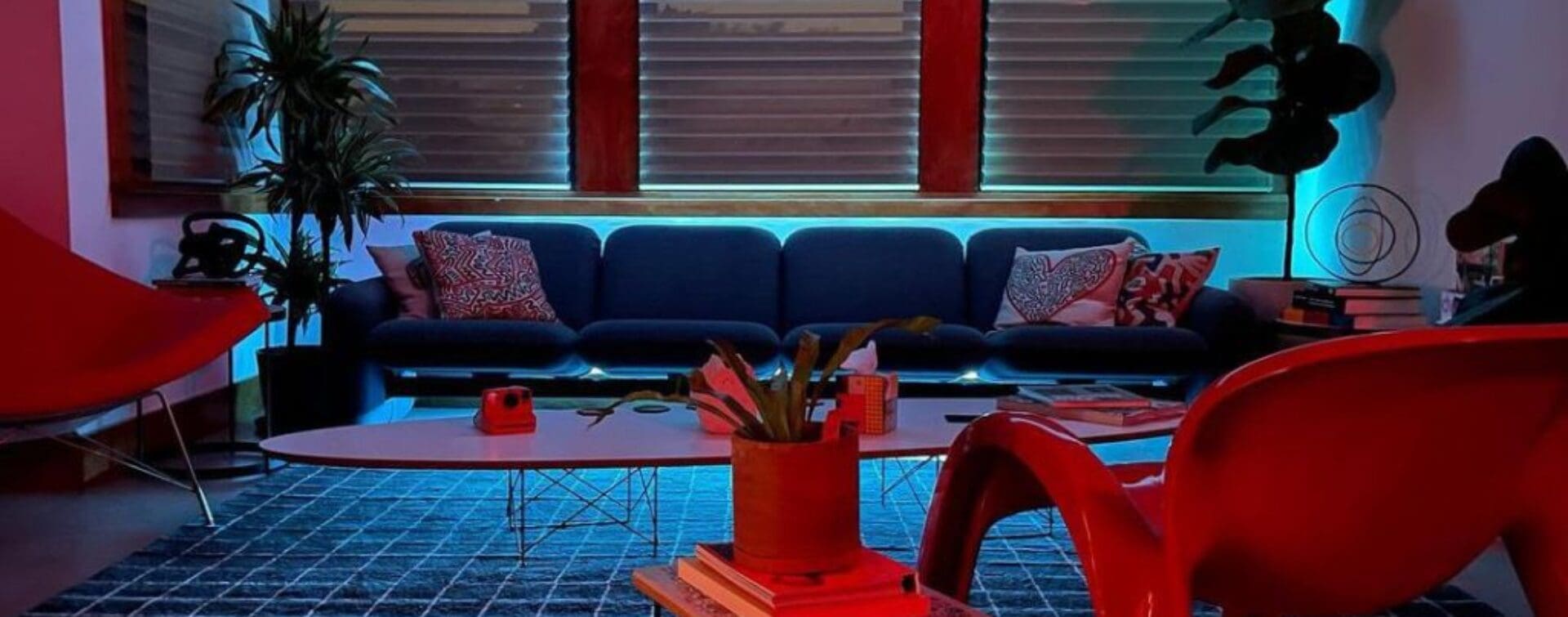NYC Creative Studios: Capsules of Creative Freedom and Expression
At RIOT creative studios, we’re inspired by innovative studio spaces that fuel creativity, where the extraordinary takes shape in modern creative environments. Recently, whilst looking for inspiration for our very own creative space in NYC, we got thinking about the city we live and create in.
We stumbled upon documentary photographer and filmmaker Joshua Charow’s exploration of New York City’s original artist lofts. These NYC creative studio spaces are places where trailblazers transformed empty rooms into breeding grounds for innovation and dynamic creative hubs. These lofts and NYC creative studios aren’t just structures; they’re the lifeblood of New York City, which once lived and breathed artistic expression.
In this journal entry
Looking for creative studios in NYC that can actually ship the work? RIOT blends strategy, design, and production under one roof—cyclorama & daylight studios, motion control, live-switch capability, and a senior creative team that directs, shoots, and finishes. Book the space, hire the crew, or bring us in end-to-end.
Capturing the Soul of NYC’s Creative Studios & Artist Lofts
Joshua spent two years diving deep into these legendary creative spaces, resulting in his powerful photography book, “Loft Law: The Last of New York City’s Original Artist Lofts.“
The Loft Law of 1982 was a turning point, offering legal protection to artists living in converted studio spaces and urban creative spaces in commercial and manufacturing-zoned lofts across neighborhoods like Soho, Tribeca, and the Bowery—areas that were the gritty heart of Manhattan’s creative explosion. New York City’s artist lofts and creative studios are iconic symbols of the city’s creative spirit and history. These once-industrial spaces transformed into residential havens, fostering a unique blend of art, culture, and community.
The Birth of Artist Lofts & The Rise of Creative Workspaces
In the mid-20th century, as manufacturing industries moved out of Manhattan, vast, empty lofts were left behind in neighborhoods like SoHo, Tribeca, and the Bowery. These spaces, with their high ceilings, large windows, and open floor plans, offered affordable options for artists struggling to find workspace, living quarters, and creative studios in the rapidly gentrifying city. Initially, living in these industrial spaces was illegal, but landlords often turned a blind eye as it provided income for otherwise vacant buildings.
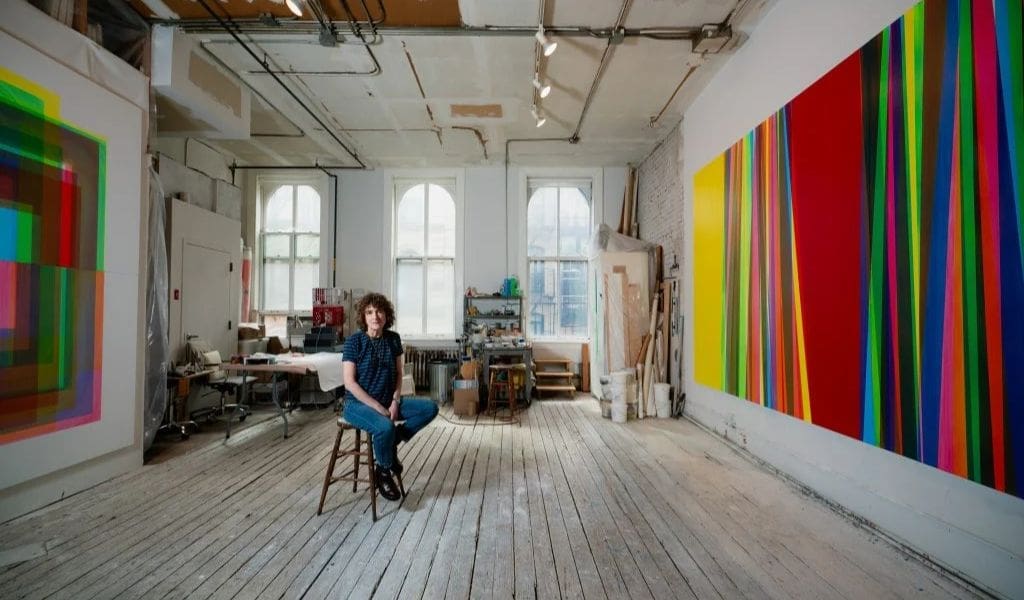
These creative studio environments became hubs for creativity, where artists from various disciplines lived and worked side-by-side in collaborative studio spaces. This fostered a vibrant and collaborative atmosphere. Lofts often lacked basic amenities like heating, plumbing, and electricity, reflecting the DIY spirit of the era. The bohemian lifestyle of loft-dwellers influenced fashion, music, and art, contributing to the city’s counterculture movement.
New York’s Creative Mavericks: Redefining Art and Expression from their Lofts
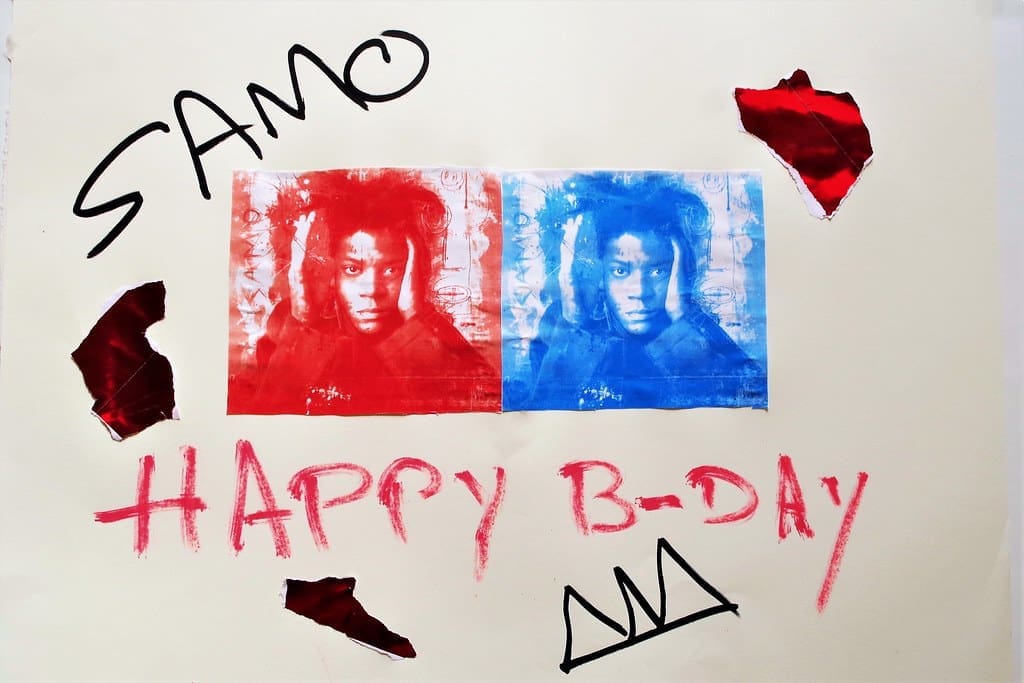
Jean-Michel Basquiat: The Meteoric Rise of a Street Poet
Jean-Michel Basquiat was more than an artist; he was a cultural phenomenon. Born in Brooklyn to a Haitian father and Puerto Rican mother, Basquiat was exposed to a multicultural perspective that would later define his work. His story is one of meteoric rise from the gritty underbelly of New York City to the upper echelons of the art world, fueled by his need to speak out against the marginalization of black voices. Basquiat’s early days were spent tagging the streets with his cryptic messages under the moniker “SAMO©” (Same Old Shit), a commentary on the banality and hypocrisy he saw in society.
“I don’t listen to what art critics say. I don’t know anybody who needs a critic to find out what art is.”
– Jean-Michel Basquiat
When Basquiat transitioned from graffiti artist to painter, his work retained the rawness of the streets, incorporating symbols, skeletal figures, and frenetic text that reflected his internal dialogue and the chaos around him. His painting “Untitled (Skull)” is a visceral amalgamation of African masks and modern street art, blending the primitive with the contemporary, just like New York itself. His friendship and collaboration with Andy Warhol became a symbol of the fusion between underground culture and the mainstream art world. It was an electric partnership that juxtaposed Basquiat’s raw, untamed style with Warhol’s polished, pop sensibility, a relationship that mirrored the creative duality of New York City.
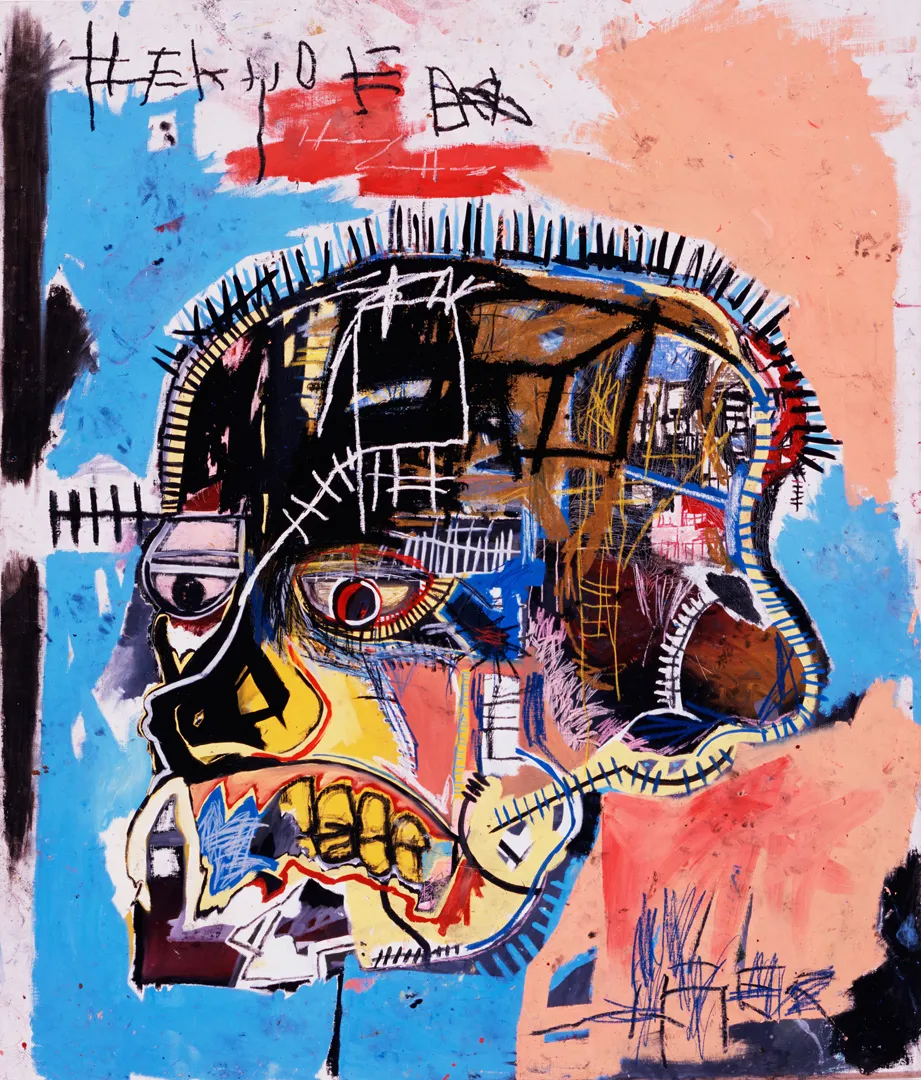
At RIOT, we draw from Basquiat’s unapologetic style and fearless approach to creativity. Our studios are spaces where the energy of the streets meets the polish of the gallery, where raw talent is refined but never restrained. We embrace Basquiat’s ethos: art is a powerful tool for self-expression and social commentary, a means to challenge the status quo and provoke thought.
Andy Warhol: The Man Who Made Art a Lifestyle
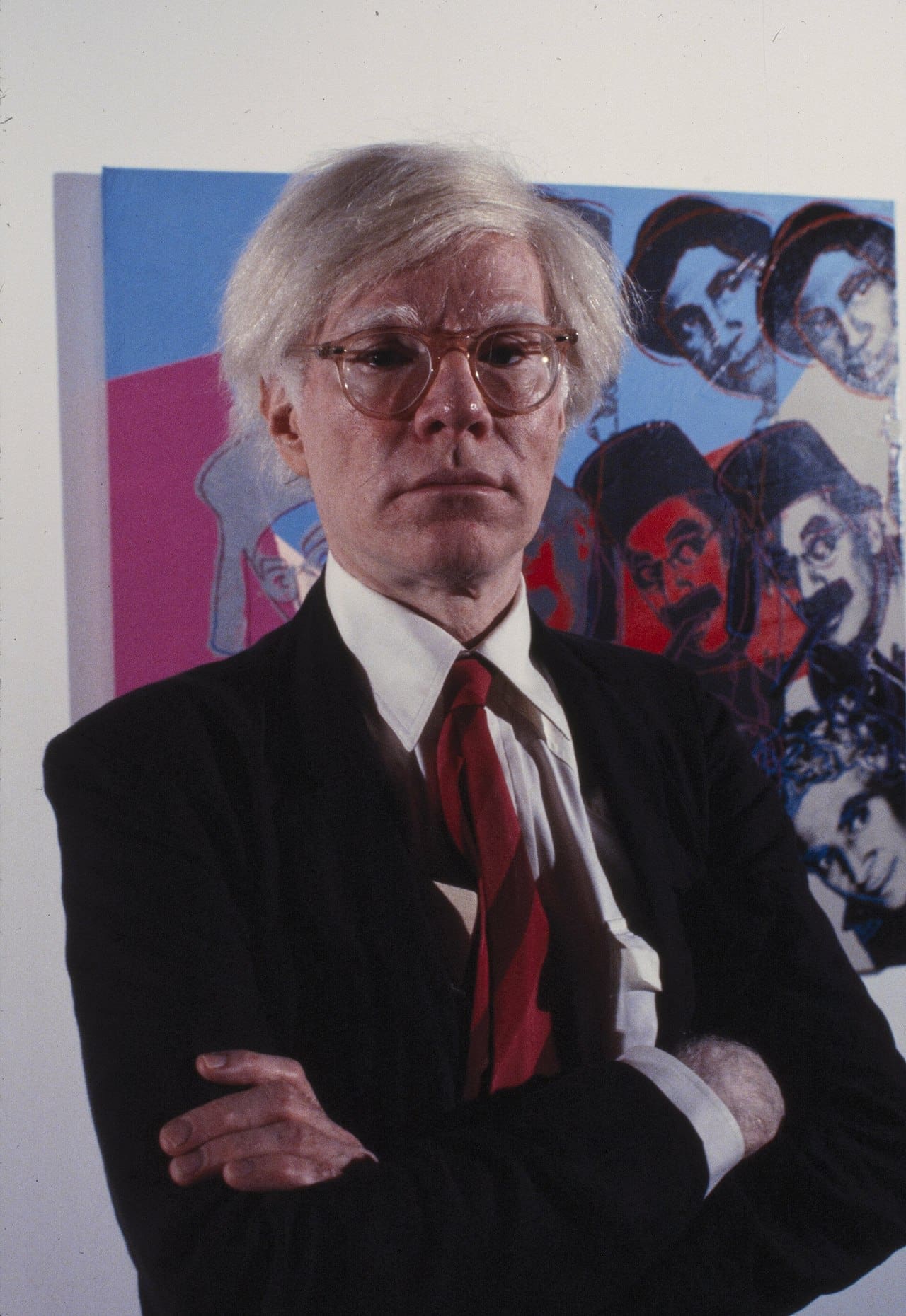
Andy Warhol didn’t just change art; he changed the very idea of what it could be. A Pittsburgh native who became the quintessential New Yorker, Warhol turned his studio, The Factory, into the epicenter of a cultural revolution. In the 1960s, The Factory became the place to be—where avant-garde artists, celebrities, musicians, and socialites gathered. Warhol’s process was as industrial as the city itself; he mass-produced art the way New York mass-produced culture, reflecting the rapid consumerism and media obsession of the time.
“I think everybody should be a machine. I think everybody should like everybody.”
– Andy Warhol
Warhol’s fascination with fame, repetition, and consumer goods turned the ordinary into the extraordinary. His Campbell’s Soup Cans and Marilyn Monroe portraits weren’t just art pieces; they were cultural statements. Warhol understood the power of branding and media manipulation long before social media and reality TV became the norm. He said, “Being good in business is the most fascinating kind of art,” and he practiced this belief, turning his art into a brand, his persona into a product. Warhol’s work blurred the lines between artist and entrepreneur, showing that creativity could be commodified without losing its impact.
At RIOT, Warhol’s influence is palpable. At our creative studios, the boundaries between art, commerce, and culture dissolve. We see creativity as a holistic process that encompasses all aspects of life. Inspired by Warhol’s embrace of the industrial and the iconic, our spaces are designed to foster collaboration, encourage experimentation, and celebrate the fusion of different creative worlds. We believe, like Warhol, that creativity isn’t confined to a canvas—it’s a lifestyle.
Keith Haring: The Subway Poet Who Painted the Streets
Keith Haring’s art was a language that transcended the barriers of class, race, and sexuality. His bold, cartoon-like figures, often painted in stark black and white, leaped from the subways to canvases, walls, and even onto the bodies of his friends. Haring saw New York City as his canvas, and his work as a form of communication. He was driven by a mission to make art that was accessible and spoke to the everyday person. In the early 1980s, Haring’s chalk drawings became a familiar sight on the black paper panels used to cover unused advertising space in subway stations. His work wasn’t just about aesthetics; it was about message, movement, and meaning.
“The public needs art, and it is the responsibility of a ‘self-proclaimed artist’ to realize the public needs art, and not to make bourgeois art for a few and ignore the masses.”
– Keith Haring
Haring’s art tackled heavy themes—AIDS, apartheid, nuclear disarmament—with a simplicity and directness that made them all the more powerful. He was an activist at heart, using his art to advocate for the marginalized and the oppressed. His famous piece, “Crack is Wack,” painted on a handball court wall in Harlem, became a rallying cry against the crack cocaine epidemic. Haring believed in art’s ability to educate and inspire, saying, “Art is for everybody.”
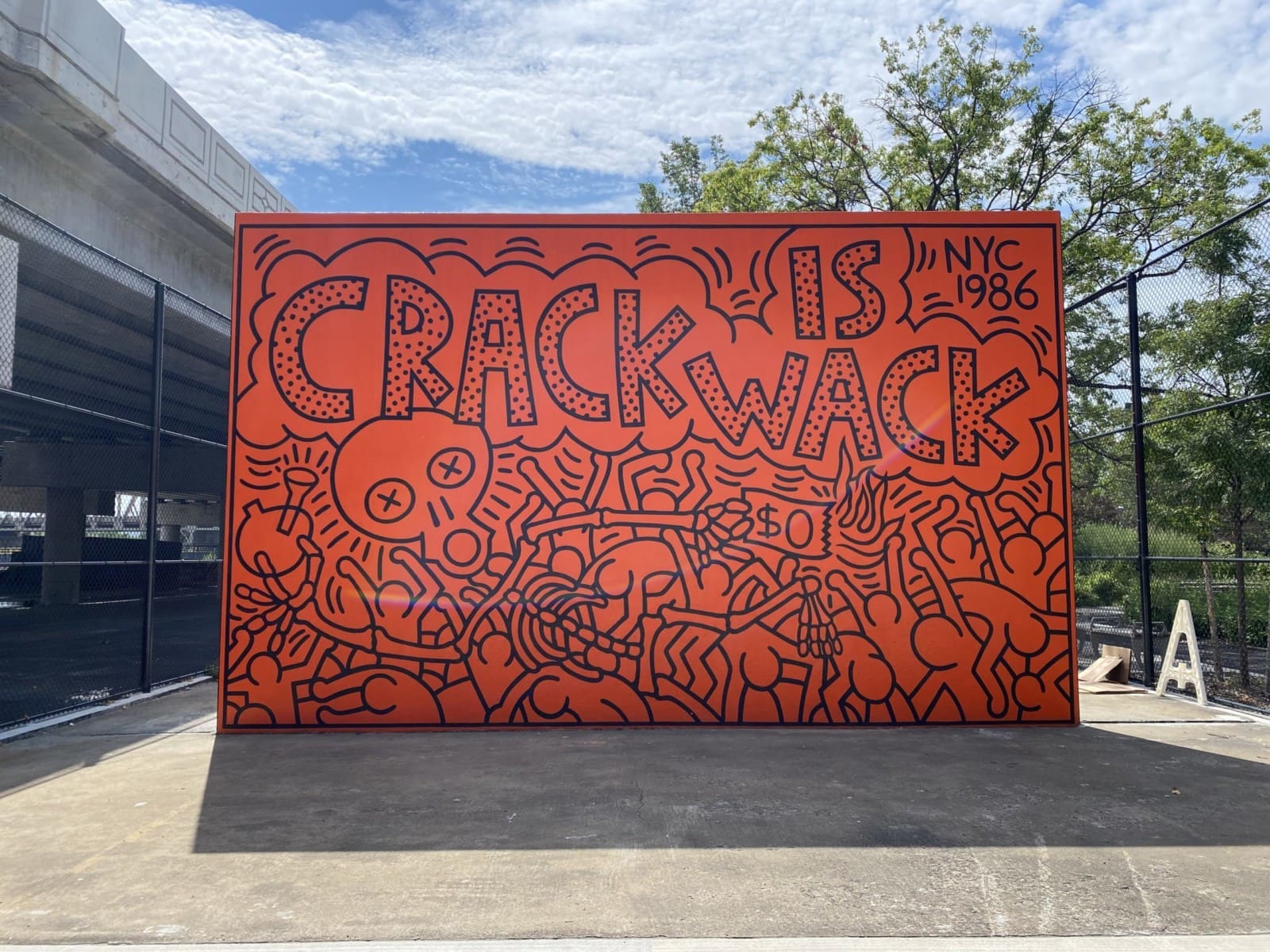
At RIOT, we share Haring’s vision of art as a universal language. Our creative spaces are designed to be inclusive, breaking down barriers and inviting everyone to engage with art, whether as creators or observers. We believe in the power of art to start conversations, challenge perspectives, and bring about change. Haring’s legacy is alive in our studios, where art is not confined to the walls but spills out into the community, creating a dialogue that resonates far beyond our doors.
The Loft Law, Preservation, and the Impact on Creative Studios in NYC
By the 1980s, the number of artists living in lofts had grown significantly, leading to the enactment of the Loft Law. This landmark legislation granted legal tenancy to loft residents, providing them with rent stabilization and protection from eviction.
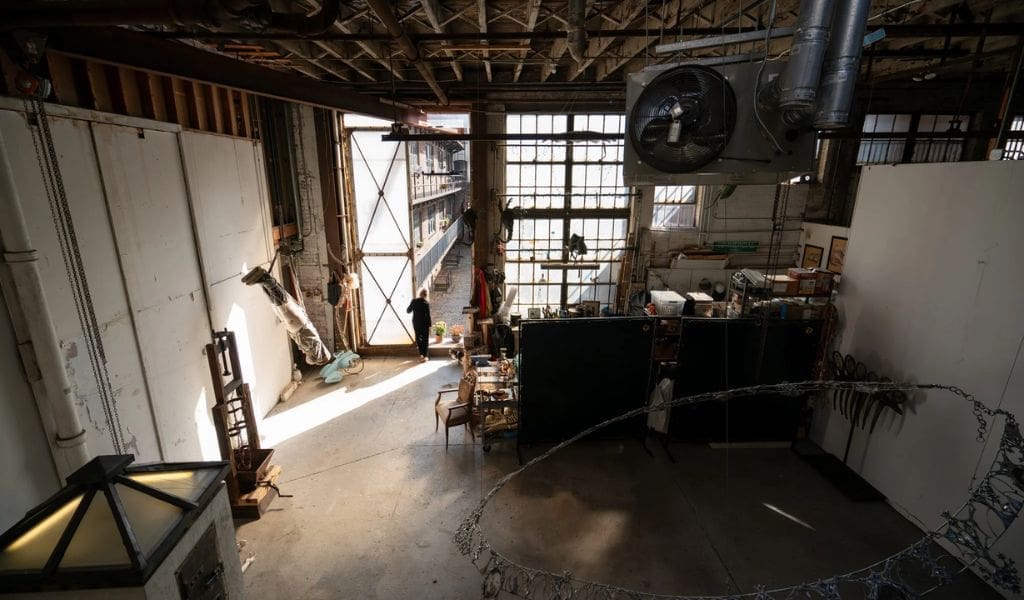
While the Loft Law protected existing tenants, it did not prevent the conversion of many lofts into luxury apartments, leading to the displacement of artists and the erosion of the original loft culture. Despite these challenges, the legacy of New York City’s artist lofts lives on. The studio spaces continue to inspire and attract creative individuals, and the history of this movement is celebrated in art, film, and literature.
The Power of Place in a Changing City
Armed with a map of the remaining Loft Law-protected buildings, Charow hit the streets, knocking on doors and capturing the lives of over 50 artists who continue to call these lofts their home, dedicated art studios, and the ultimate creative workspaces in New York. His work is more than just documentation; it’s a celebration of the raw, undiluted spirit that still thrives in these spaces.
As New York grapples with an influx of vacant commercial spaces, Charow’s work feels particularly relevant. These lofts were never just places to live—they were incubators where some of the most groundbreaking art movements were born. The Loft Law didn’t just protect living spaces; it protected the very essence of creativity that helped define New York City.
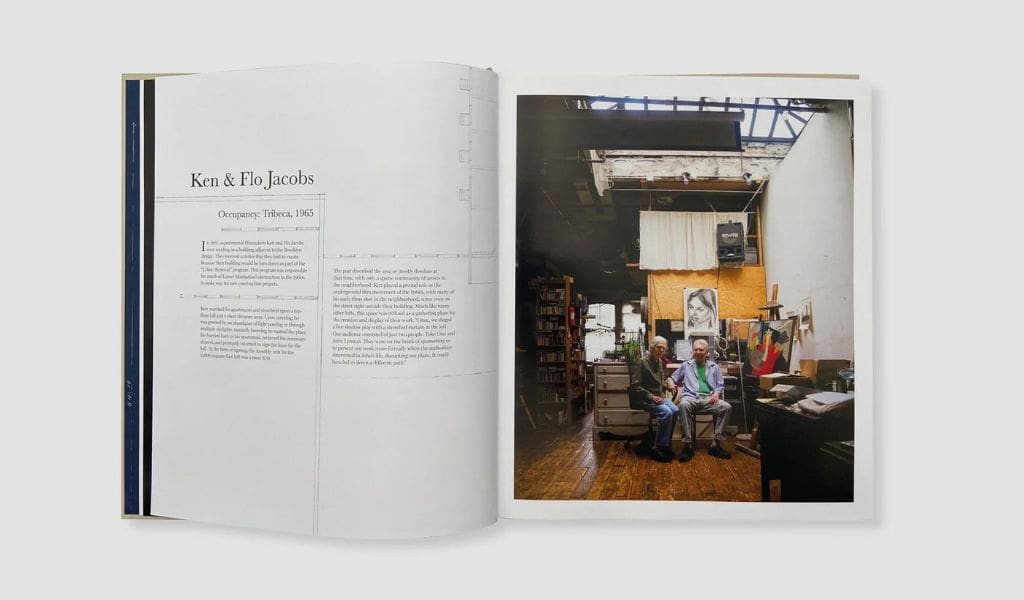
RIOT Creative Studios NYC: A Sanctuary for Creativity & Play
Just like these iconic artist lofts and creative studios in NYC, RIOT’s creative spaces are more than just places to create—they are sanctuaries where avant-garde art meets cutting-edge technology.
The space is not just a home for our creative agency but a full-service production studio, complete with a motion-controlled robot arm that dances to the beat of innovation. Our NYC creative studios are a haven for those who, like the pioneering artists of New York’s original lofts, push the boundaries of creativity and innovation, making the most of every space designed for creative freedom.
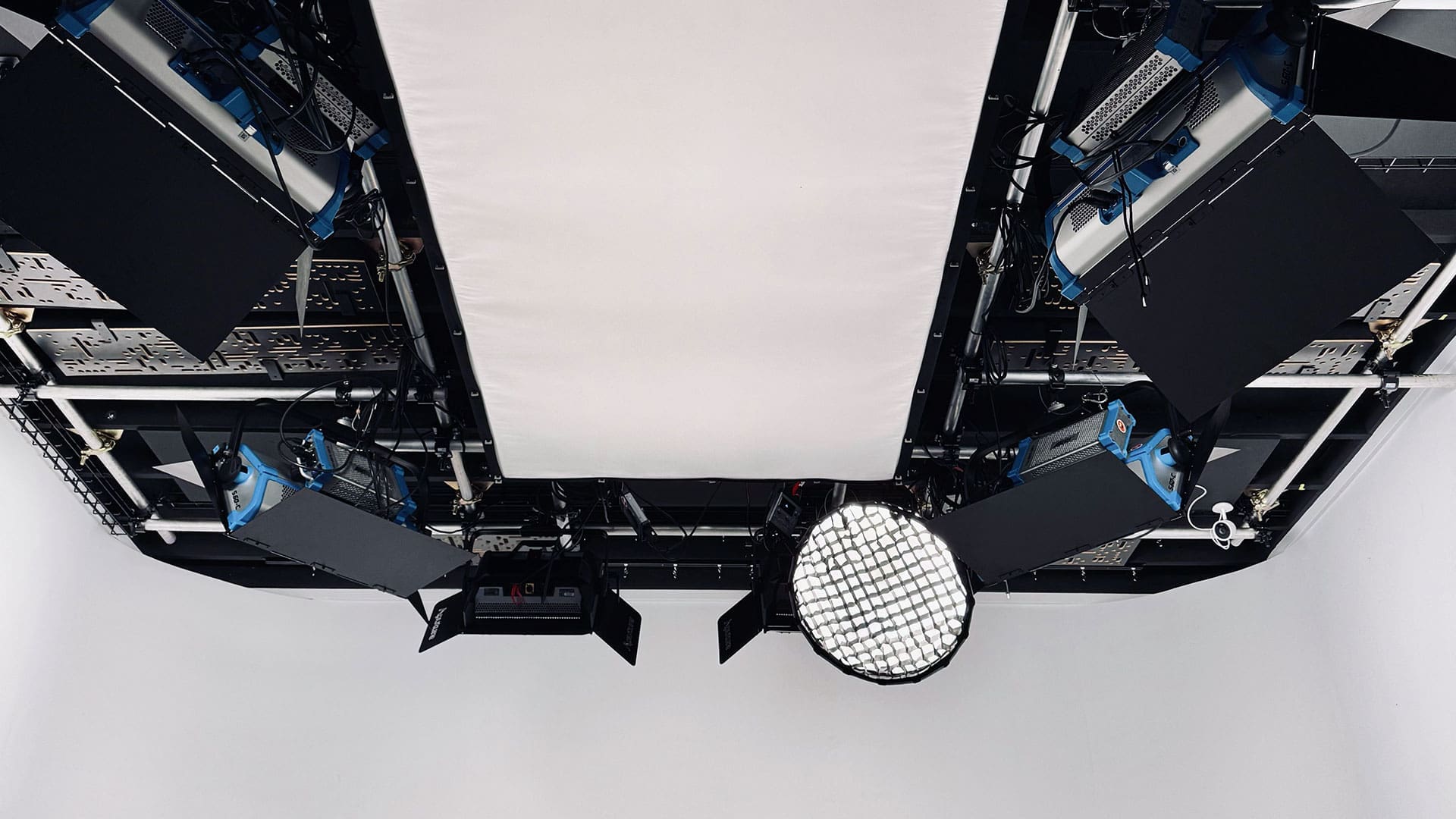
Our two distinct creative spaces are designed to inspire and ignite. The cyclorama studio is where creativity meets precision, capturing everything from a subtle glance to the dynamic flow of movement.
Meanwhile, our sun-drenched, natural-light creative studio doubles as a live audio room, resonating with the sound of ideas coming to life in a multi-purpose creative workspace. Both spaces are wired for the future, equipped with 3G-SDI and 10G ethernet, and primed for producing live-switched events and streaming experiences that break new ground.
Keeping the Creative Spirit Alive in NYC
Charow’s photographs aren’t just images—they’re a bold reminder that the spirit of these lofts is very much alive. They capture the grit, the passion, and the relentless creativity of artists who continue to make their mark, even as the city around them changes. At RIOT creative agency, we channel that same energy into every project, pushing the envelope just as the artists who once filled these lofts did.

Our boutique creative studio space isn’t just a studio; it’s a place where work feels like play, where every detail—from our 90’s vintage Pepsi machine to a kitchen stocked with wholesome treats—is designed to spark joy and fuel creativity. With over a thousand vintage video games ready to transport you to pixelated worlds, our space is a playground for the imagination.
As we meticulously craft a digital showcase of our NYC creative studios, we invite you to lose yourself in our studio, that is a portal to the endless possibilities that unfold within RIOT’s walls. Our creative studios are where digital solutions and creative expertise converge to bring ideas to life.
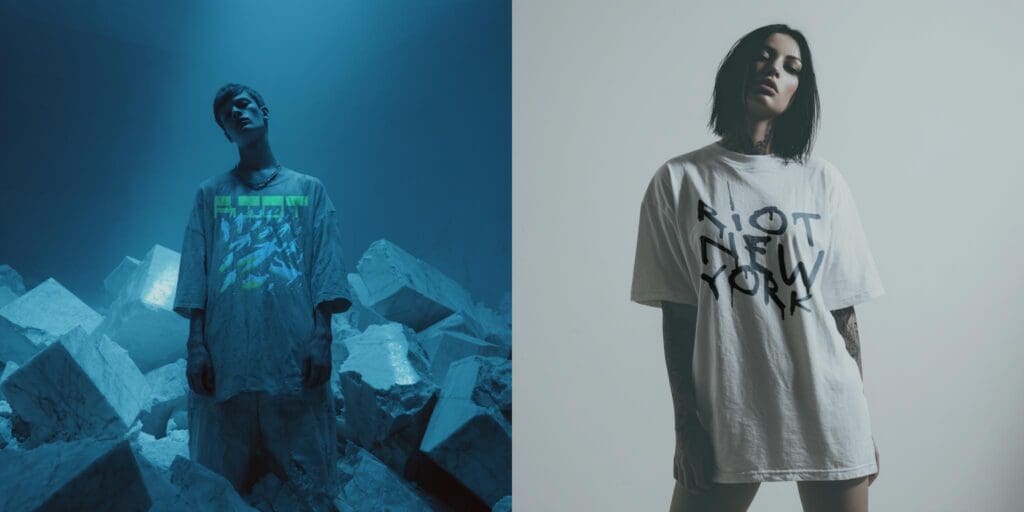
We offer a full suite of services, from digital content production and brand storytelling to social media strategy and community engagement. Our team excels in branding and identity, brand strategy, and visual identity work that leaves a lasting impact. With web design, UX/UI design, SEO, and page optimization, we ensure each project is built to perform.
Whether it’s video production, animated explainers, event coverage, or even mobile app design, we specialize in crafting bespoke experiences that resonate with audiences. Through custom platforms and performance analytics, we create work that not only inspires but also drives results, keeping the spirit of NYC’s artist lofts alive as we continue to push boundaries in creativity and innovation.
Just as the original artist lofts and creative studio spaces of New York have left a lasting legacy, we’re here to make our mark, designing inspiring creative environments and creating work that inspires.

